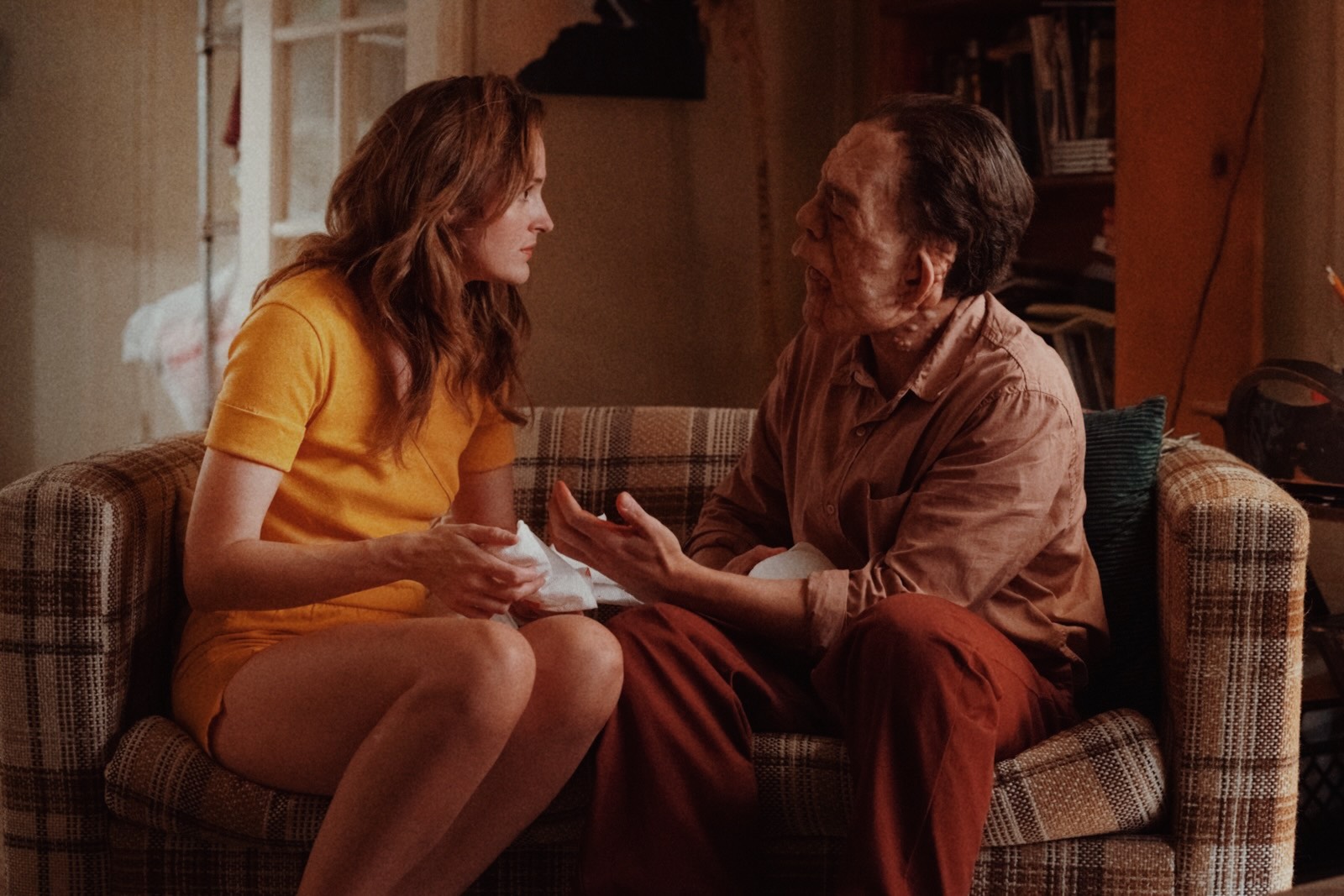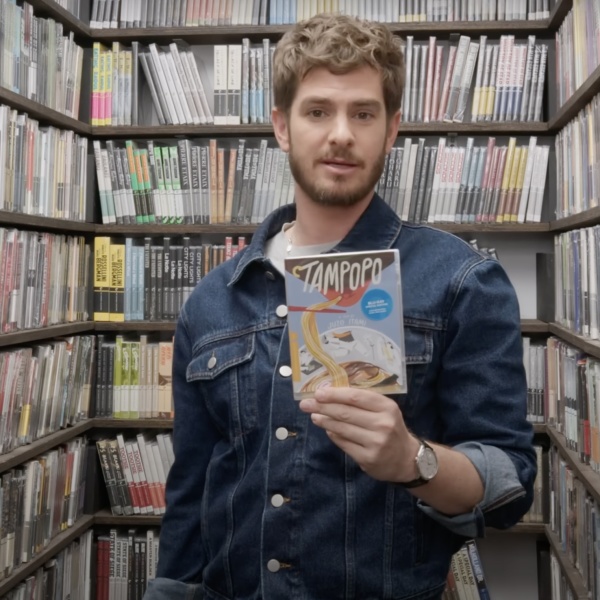David Lynch’s 1980 biopic “The Elephant Man” had a massive influence on A24’s “A Different Man,” directed by Aaron Schimberg. Both are explorations of notions around beauty and ugliness tied to Neurofibromatosis, the genetic disorder that causes tumors to grow in the nervous system and skin. This severely afflicts the face and body of John Merrick (John Hurt) in “The Elephant Man” and Edward (Sebastian Stan) in “A Different Man.”
In the black comedy “A Different Man,” aspiring actor Edward undergoes experimental facial reconstructive surgery to cure the disease. This turns into a bizarre nightmare when he changes his identity and loses a theater role based on his life to another actor, Oswald (Adam Pearson, who has NF).
Serendipity (and a recommendation from Stan) brought prosthetics makeup designer Mike Marino (“The Penguin”) to “A Different Man,” because Christopher Tucker’s pioneering prosthetics on “The Elephant Man” inspired Marino to pursue his profession. In a way, he’s come full circle with this film about prosthetics and the masks that we wear in life.
“The makeup challenge was enormous, especially since I got into this industry via the inspiration of ‘The Elephant Man,’” Marino told IndieWire. “I saw it when I was 5 years old and didn’t quite understand that it was a makeup or that it was based on a real person. I didn’t know how to understand the film. I didn’t know how to empathize with the film, until many years later when I watched it again. But I’m really happy that this film exists, not only for the awareness but it speaks on so many levels and so many layers of physicality, what beauty is with humor and kindness. It’s weird…like a Charlie Kaufman film.”

Creating the prosthetics to emulate the look of NF was a challenge because it’s a large makeup with substantial volume, with some sections 2 inches thick, which limited Stan’s mobility. “So the design of the makeup is actually very thought out as far as where I could get away with something very thick or very thin, and if I could get any kind of movement out of it,” Marino said.
The prosthetic designer studied Pearson’s face and how it moved and used that as the basis of creating Edward’s face, which, of course, had a practical application for the story and in comparing the two characters. “We try to emulate nature as close as we can, but it was a real challenge fabricating those pieces and blending them in,” added Marino. “The uncomfortable nature of wearing a prosthetic is one thing, but to now take your equilibrium away by covering and closing your ear off and closing your eye off, it really throws everything off balance even more.
“And I think it helped Sebastian’s performance by really understanding what it might temporarily be like to live as Adam,” he continued. “He would walk around New York City, take the subway, go to stores, and that helped the whole performance. And, luckily, he lived down the block from me in Manhattan. And he would come over super early because I was also working on the final season of ‘The Marvelous Mrs. Maisel.’”
Marino embraced both practical and 3D scanning and 3D printing techniques. “I still sculpt things by hand, I still do every texture by hand, and we make the wigs by hand,” he said. “So, years ago, on the ‘Elephant Man,’ they used foam latex, which was an opaque material, very lightweight and soft, which is the advantage of it when making something thicker than you would normally.

“And these days we use silicone, which is softer and thinner and more translucent, much like real skin,” Marino added. “And what we do is glue that very soft piece to the face. But it’s heavy. So we developed silicone that was lightweight but translucent. So that was an advancement that we were able to achieve as a hybrid of both. I made much thicker pieces that were lighter weight that wouldn’t drag down. And once that was cast out, I airbrushed and pre-painted every little blood vessel, every freckle, all the depth and the translucency, so that it would save time in the chair.”
There were several pieces involved: a chin and cheeks connected to the whole face with an ear, and then two eyebrows and a hairpiece that combed into Stan’s own hair. In addition, there was the mask that Edward wears, a variation of the prosthetic with some of the features moved around that he could strap on in the theater.
But then there were the post-surgery stages, which begin when Edward peels his face off. This was a super soft version of the prosthetics. “So we used a different material,” Marino said. “This was an extra soft material that stretches and there’s little, flaky pieces and scabs, and other stuff on it. And, underneath, it’s [Edward] where his face is this transitional version: his chin is still twisted and his face still has things on it.
“And, if you look closely, the next scene you see in that mirror shot,” he continues, “there’s not just Sebastian as Sebastian under there. There’s another layer of prosthetic. The next time we see him all cleaned up, it is just Sebastian as Edward.
In the end, it became a powerful metamorphosis for Edward: “We had the idea of it being like a cocoon, almost like a butterfly,” Marino added, “where it hatches and it creates this new creature and sheds its skin.”




